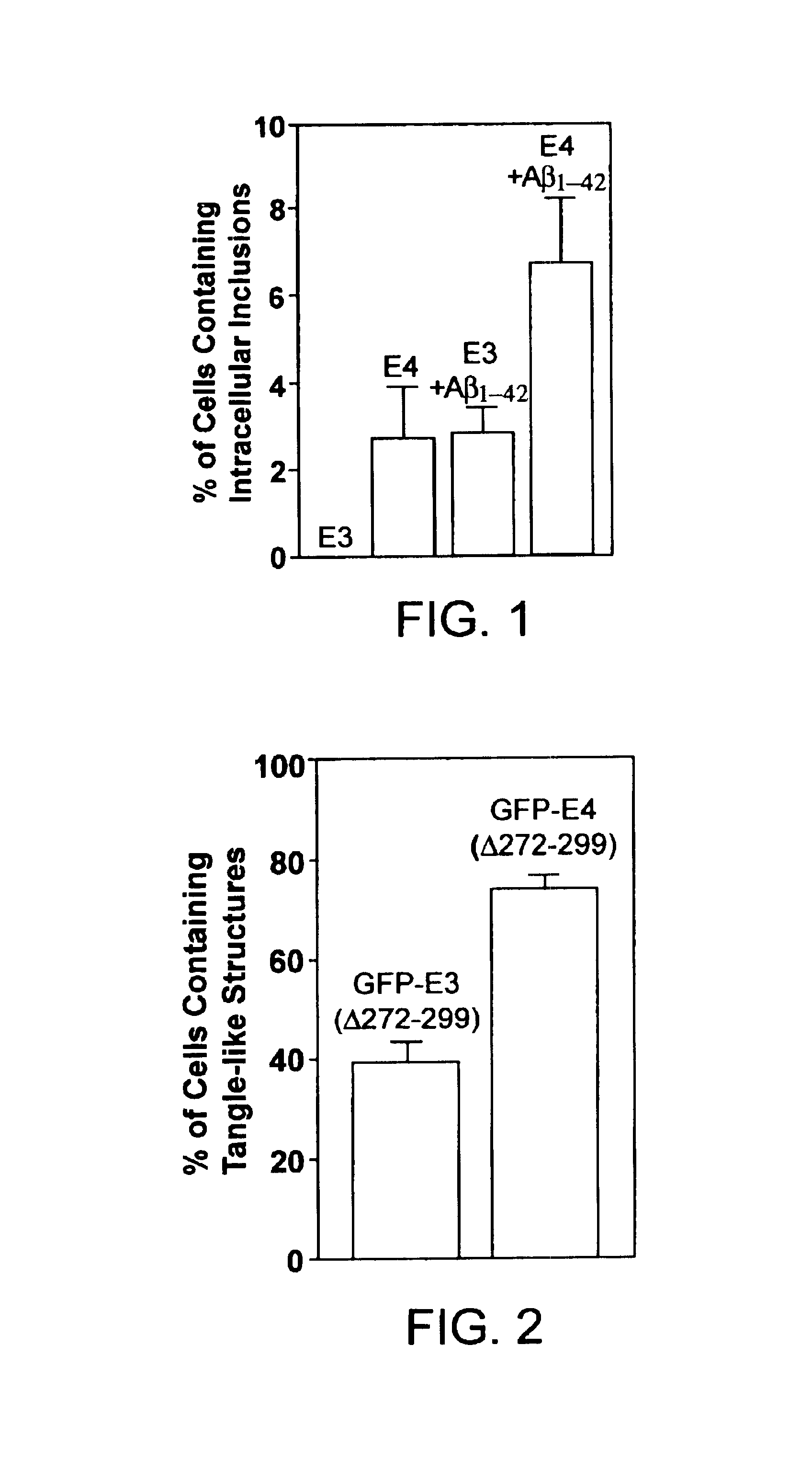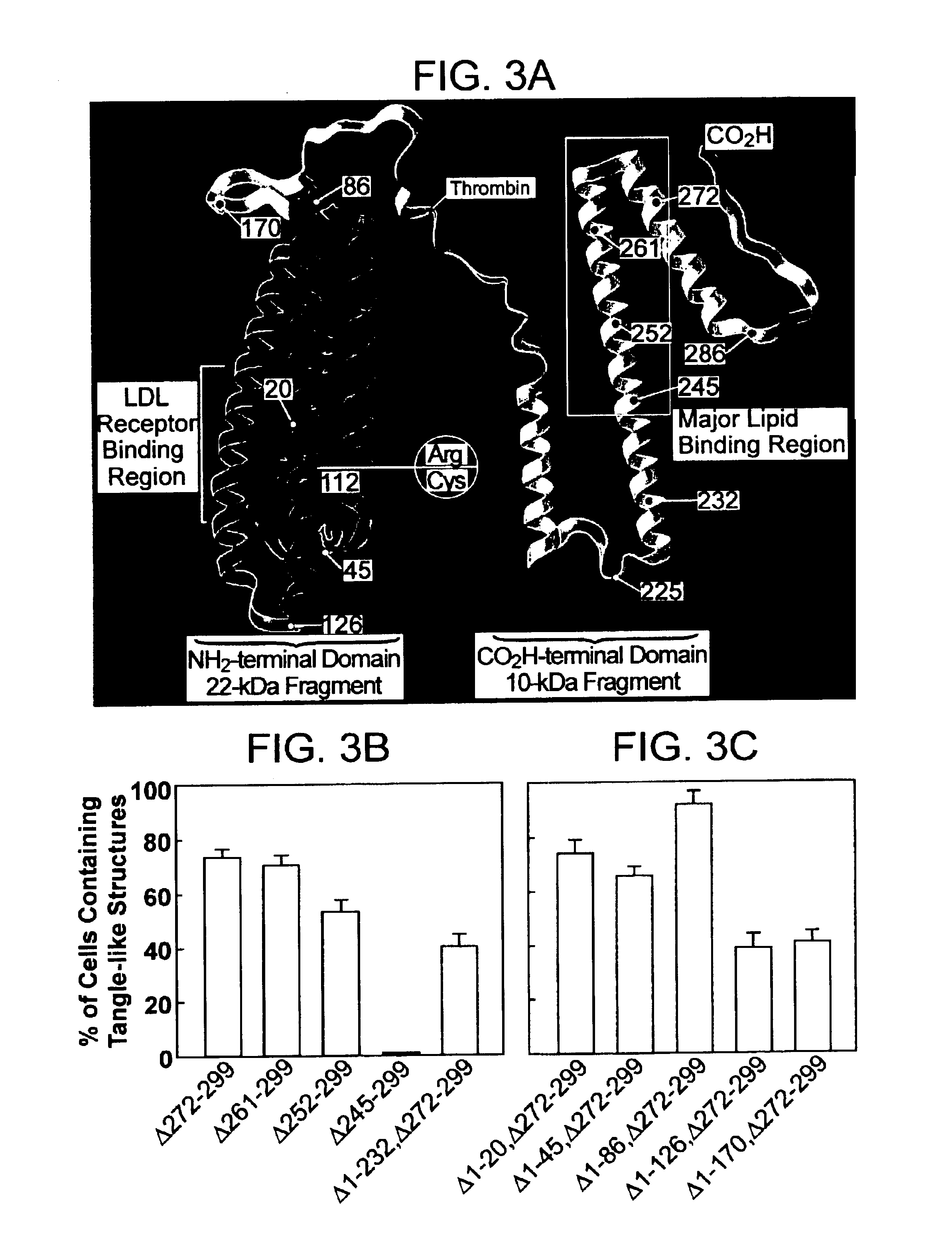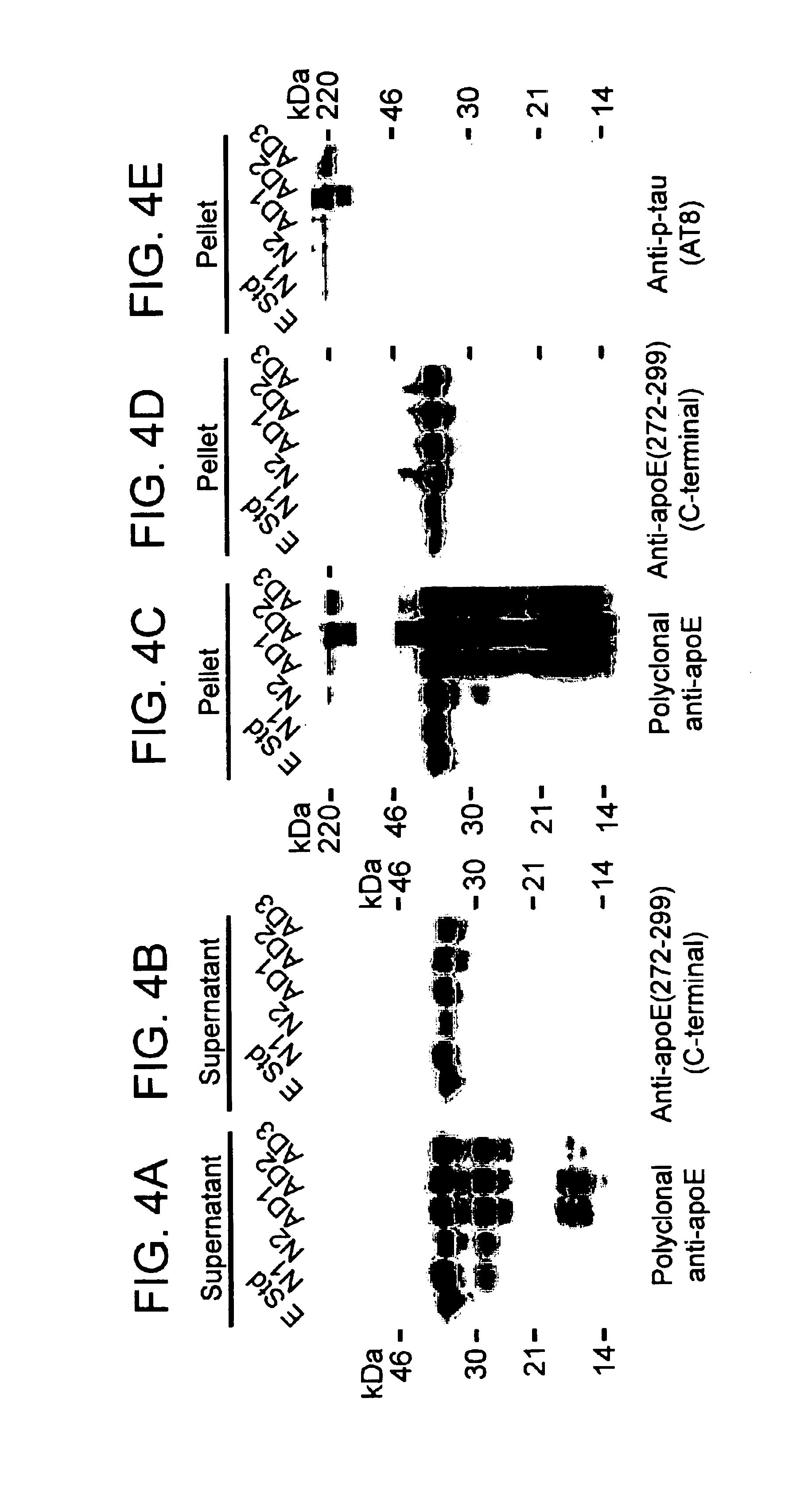Methods of treating disorders related to apoE
a technology of apoe and apoe4 is applied in the field of apoe treatment methods, which can solve the problems of increased plasma cholesterol levels, poor clinical outcome of patients with acute head trauma and stroke, and association of apoe4, so as to inhibit the cleavage enzyme of apoe, reduce the level of a carboxyl-terminal truncated form of apoe, and inhibit the formation of neurofibrillary tangles
- Summary
- Abstract
- Description
- Claims
- Application Information
AI Technical Summary
Benefits of technology
Problems solved by technology
Method used
Image
Examples
example 1
Characterization of Carboxyl-terminal Truncated apoE in Neuronal Cells
Methods and Materials
Minimum essential medium (MEM), N2-medium supplements, and fetal bovine serum (FBS) were purchased from Life Technologies, Inc. Paraformaldehyde, streptolysin-O (STP-O), and Triton-100 were from Sigma (St. Louis, Mo.). The enhanced chemiluminescence (ECL) chemiluminescence detection kit for Western blots was from Amersham Life Science. Protein-A agarose was from Boehringer Mannheim. Recombinant human apoE3, apoE4, apoE3(.DELTA.272-299), or apoE4(.DELTA.272-299) were expressed in E. coli and purified using established techniques.
Polyclonal anti-human apoE antibody was from Calbiochem. Anti-apoE-carboxyl-terminal antibody (amino acids 272-299) was obtained by passing the polyclonal anit-apoE antibody for three times through a Sepharose CL-4B column that was coupled with a mixture of apoE3(.DELTA.272-299) and apoE4(.DELTA.272-299). The unbound fraction was used as anti-apoE-carboxyl-terminal anti...
example 2
Analysis of Transgenic Mice Expressing apoE3 or apoE4 Specifically in CNS Neurons
Generation of Transgenic Mice
Transgenic mice expressing human apoE3 or apoE4 specifically in central nervous system (CNS) neurons were generated at the Gladstone Institutes as reported previously (Raber J. et al. Proc. Natl. Acad. Sci. USA. 1998, 95:10914-10919; Muttini M. et al. J. Neurosci. 1999, 19:4867-4880). The expression of apoE transgenes was driven by a neuron-specific enolase (NSE) promoter. NSE-apoE3 and NSE-apoE4 lines with matched cerebral levels of transgene expression were selected and crossed with Apoe.sup.- / - mice (C57BL / 6J-Apoetm1Unc) from Jackson Laboratories (Bar Harbor, Me.). After elimination of wild-type mouse Apoe alleles in two generations of breedings among the resulting offspring, transgenic mice were further crossed with Apoe.sup.- / - mice to generate NSE-apoE3 and NSE-apoE4 mice that had at least 95% C57BL / 6J genetic background. Crosses of NSE-apoE3 or NSE-apoE4 with C57BL / 6J...
example 3
Characterization of an apoE Cleavage Enzyme
The apoE Cleavage Enzyme is a Serine Protease
To determine the biochemical properties of the putative apoE cleavage enzyme, we tested the effects of different known inhibitors for four major categories of proteases, i.e., serine proteases, cysteine proteases, aspartate proteases, and metalloproteases. Both EDTA and EGTA did not inhibit the cleavage of apoE4, suggesting that the enzyme is not a metalloprotease. Likewise, pepstain and Iodoacetimide or E-64 did not inhibit the cleavage of apoE4, indicating that the enzyme is not an aspartate protease nor a cysteine protease. PMSF totally abolished the cleavage activity, suggesting that the enzyme is a serine protease. Consistent with this conclusion, the complete inhibitor cocktail, which contains PMSF, also significantly inhibited the cleavage of apoE4.
The apoE Cleavage Enzyme is a Chymotrypsin-like Serine Protease
Serine proteases can be categorized into the following groups: trypsin-like seri...
PUM
| Property | Measurement | Unit |
|---|---|---|
| Length | aaaaa | aaaaa |
| Molecular weight | aaaaa | aaaaa |
Abstract
Description
Claims
Application Information
 Login to View More
Login to View More - R&D
- Intellectual Property
- Life Sciences
- Materials
- Tech Scout
- Unparalleled Data Quality
- Higher Quality Content
- 60% Fewer Hallucinations
Browse by: Latest US Patents, China's latest patents, Technical Efficacy Thesaurus, Application Domain, Technology Topic, Popular Technical Reports.
© 2025 PatSnap. All rights reserved.Legal|Privacy policy|Modern Slavery Act Transparency Statement|Sitemap|About US| Contact US: help@patsnap.com



